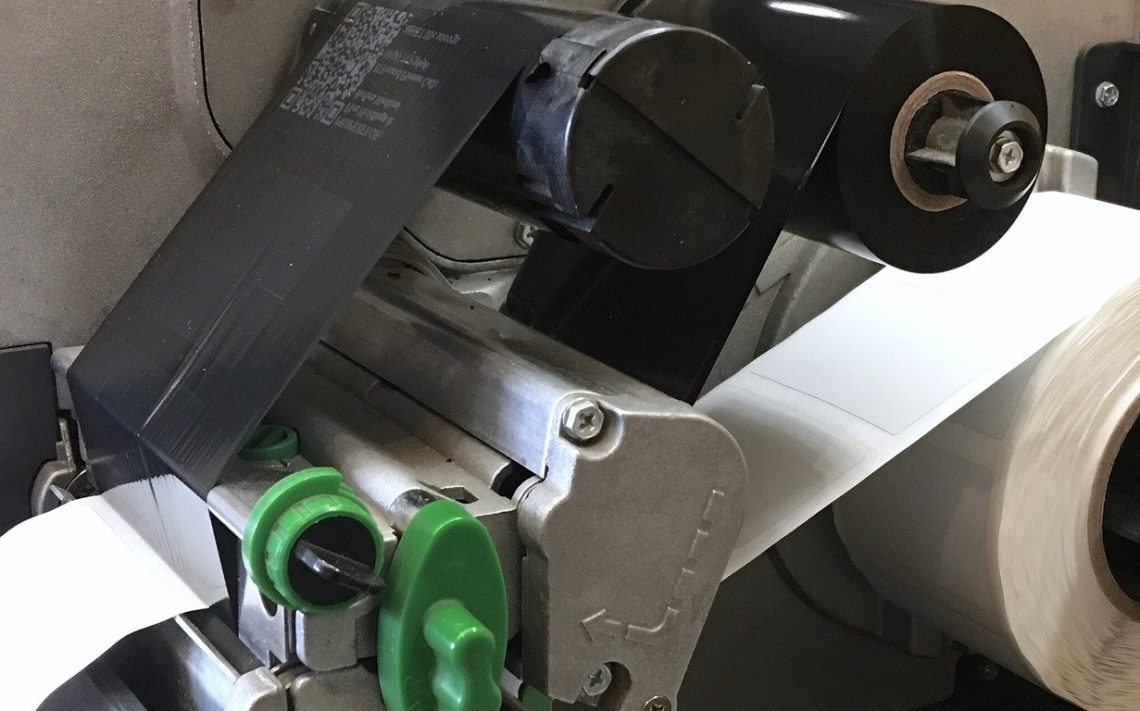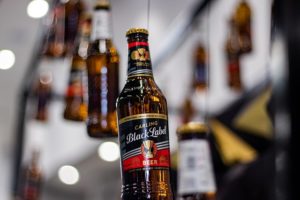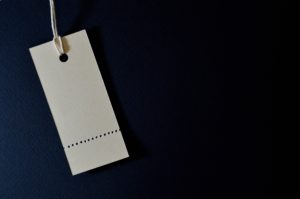
Different Types of Custom Labels
The possibilities are endless for custom label solutions, due to the broad range of different industries that use them. Here’s a look at how custom labels help specific industries:
ALUMINUM LABELS – Aluminum is one of the most durable materials for multiple purposes from products to packaging to labeling. Utilizing custom aluminum labels for your carpenter bee traps is a smart and practical choice. These labels not only add a professional touch to your traps but also serve a functional purpose. The durability of aluminum ensures that your labels will withstand various weather conditions, maintaining their appearance and legibility for an extended period. By customizing these labels with information such as your contact details or branding, you not only enhance the aesthetics of your carpenter bee traps but also make it easier for customers to identify and reach out to you. Overall, custom aluminum labels are a small investment that can significantly improve the visibility and effectiveness of your carpenter bee traps while showcasing your commitment to quality and professionalism.
BEVERAGE LABELS – Consumers are becoming more aware of ingredients and want to know what they’re putting in their bodies. Labeling must accommodate this information without resorting to fine print. The design of beverage labels should correspond with the emotional level associated with the drink. An energy drink, for example, should look like the label delivers power using vibrant color schemes.

CHEMICAL LABELS – Since certain chemicals can be dangerous to the environment, warning labels on chemical products must stand out and be easy to read. Black, white and red are common colors used for warning labels partly because they have become ingrained in culture as associated with authority and alertness.
COSMETIC LABELS – Women are increasingly interested in eco-friendly cosmetics that come in recyclable containers. Studies show that green and blue trigger associations with nature and down-to-earth feelings. Cosmetic labels, though, generally span the color spectrum and often lean toward softer colors.
COUPONS (IRC) – Printed coupons still work at creating interest in brands. Another type of coupon called an international reply coupon (IRC) can be exchanged for postage stamps when sending mail to another country.
EMBOSSED LABELS – Embossing can be done on paper, wood, metal and various other materials to create a sophisticated image. Many times embossing gives a label instant credibility because it creates the perception that meaningful effort went into the design. Some of the industries that capitalize on embossed labels include wine, beer, cosmetics, food and home decor.
FOIL LABELS – Shiny silver foil is used on a wide array of products for its flexibility, durability and ability to withstand extreme environmental conditions. Metallic labels can be a low-cost alternative for small producers. The foil allows for embossing, which can make the label look more special.
FOOD LABELS – Packaging and labeling can trigger trends in the food industry for specific market sectors. People who like healthy food, for example, are attracted to softer colors they associate with nature. Wilder color schemes are used for conventional party snacks like candy, chips and soft drinks.
INDUSTRIAL LABELS – Big machines come with multiple labels placed for engineers and mechanics to read. So no need for flashy colors on industrial labels. Since these labels must endure the lifespan of the equipment, the material and finish quality of the label must be durable, slick and water-resistant.
PEEL & SEAL LABELS – For maximum labeling flexibility, consider peel & seal labels, which are widely used by the pharmaceutical industry. It allows you to provide consumers with extended information that would not otherwise fit on a small label. It’s an excellent way to convey sustainability and efficiency because it shows you went the extra mile to provide critical product information.
PHARMACEUTICAL LABELS – Many pharma labels are commonly white on yellow or orange
bottles. Due to the wide variety of prescription and over-the-counter (OTC) drugs, it’s important to distinguish more powerful drugs from more basic pain relief medication. The FDA has specific requirements for pharma labels, such as the material must be sturdy so that legibility remains clear throughout the lifespan of the product. The label should also be resistant to both water and UV rays.
PROPANE LABELS – Meeting regulatory compliance should be a top priority for companies that manufacture propane tanks. The labelling must meet the requirements of both the Department of Transportation (DOT) and Occupational Health and Safety Administration (OSHA). Propane decals commonly use bright red as a main color for warning messages such as “flammable.”
SCRATCH-OFF LABELS – If you want to launch an exciting contest to promote your brand, get it on the scratch-off label bonanza used by lottos and countless marketers. Scratching off a silver adhesive sticker to see if you’ve won a prize adds an extra thrill to a purchase. This type of fun campaign often delivers more impressive results and standard drawings.
SPIRIT & LIQUOR LABELS – Alcoholic beverages cover a wide span of tastes and market sectors. Certain beer brands are heavily associated with sports through marketing and need labelling that inspire energy, which is a major key to victory, that’s why custom beer labels are important. Fine wine delivers a much more calm and relaxing experience, requiring a more sophisticated presentation for the label.
TAGS & SPECIALTY LABELS – The more a product falls outside the mainstream, the more niche-oriented the label should be. That means customization is the most appropriate solution for specialty products. Various types of tags can be added to products and packages to provide important product information. But in order to produce high-quality legible print on small labels, you need a printer with advanced technology.
TAMPER EVIDENT LABELS – At one time it was common for manufacturers to suffer predictable losses in a supply chain because it was easier to steal physical products in the pre-digital age. Now you can print barcodes on labels that are embedded with RFID technology for precise real-time tracking.
THERMAL TRANSFER LABELS – As the most commonly used method for barcode label printing, thermal transfer labels are produced from a thermal print head’s heat energy as ink transfers from a ribbon to the label. This solution is cost-efficient for producing a large order of units.
UL LABELS – OSHA accredited Nationally Recognized Testing Laboratories (NRTLs) to conduct product safety testing. Out of less than a few dozen labs, Underwriters Laboratories (UL) is one of the most widely used product-testing and certification organizations on a global level.
Products displaying a UL certification signal to consumers than an electrical product have been tested to meet safety standards. The three different types of UL labels are:
1. UL Listed – means the product meets a safety standard recognized by OSHA.
2. UL Classified – means the product meets strict standards by an institution not recognized by OSHA.
3. UL Certified – bridges the gap between UL Listed and UL Classified labels.